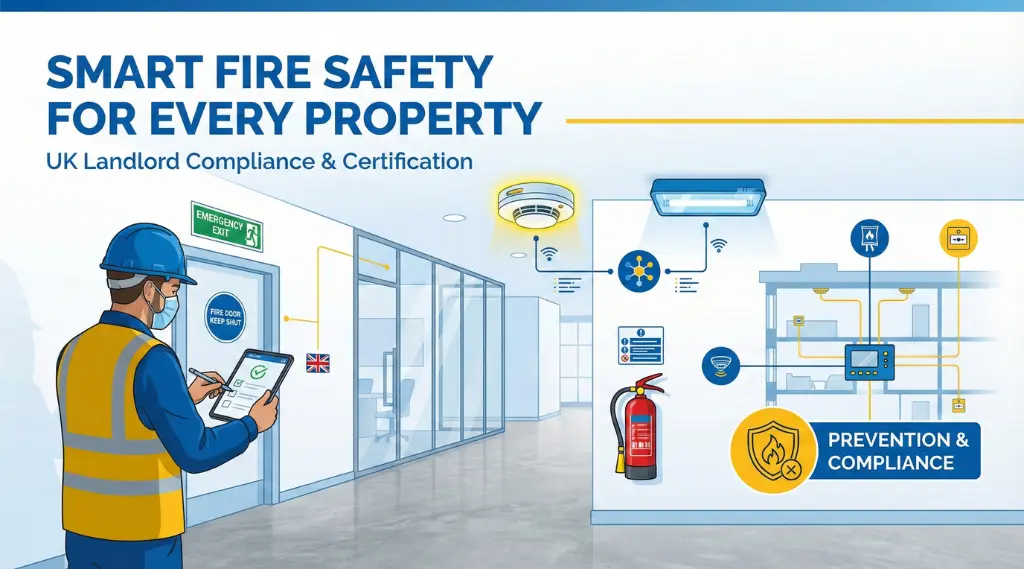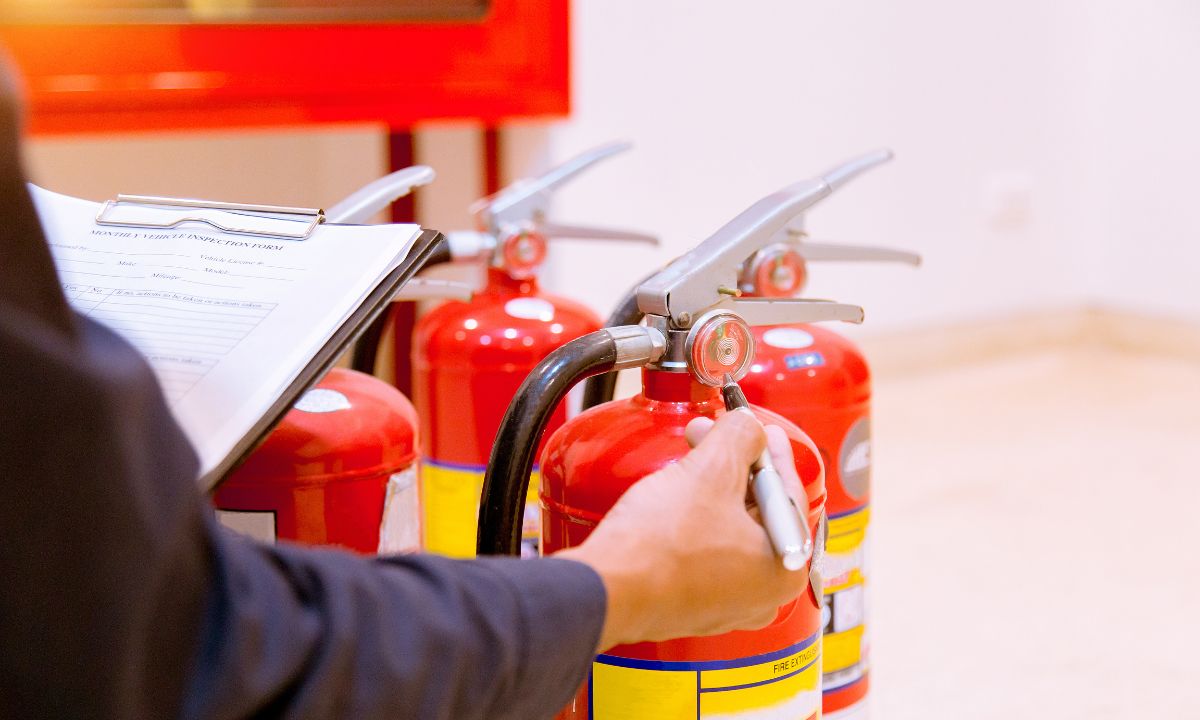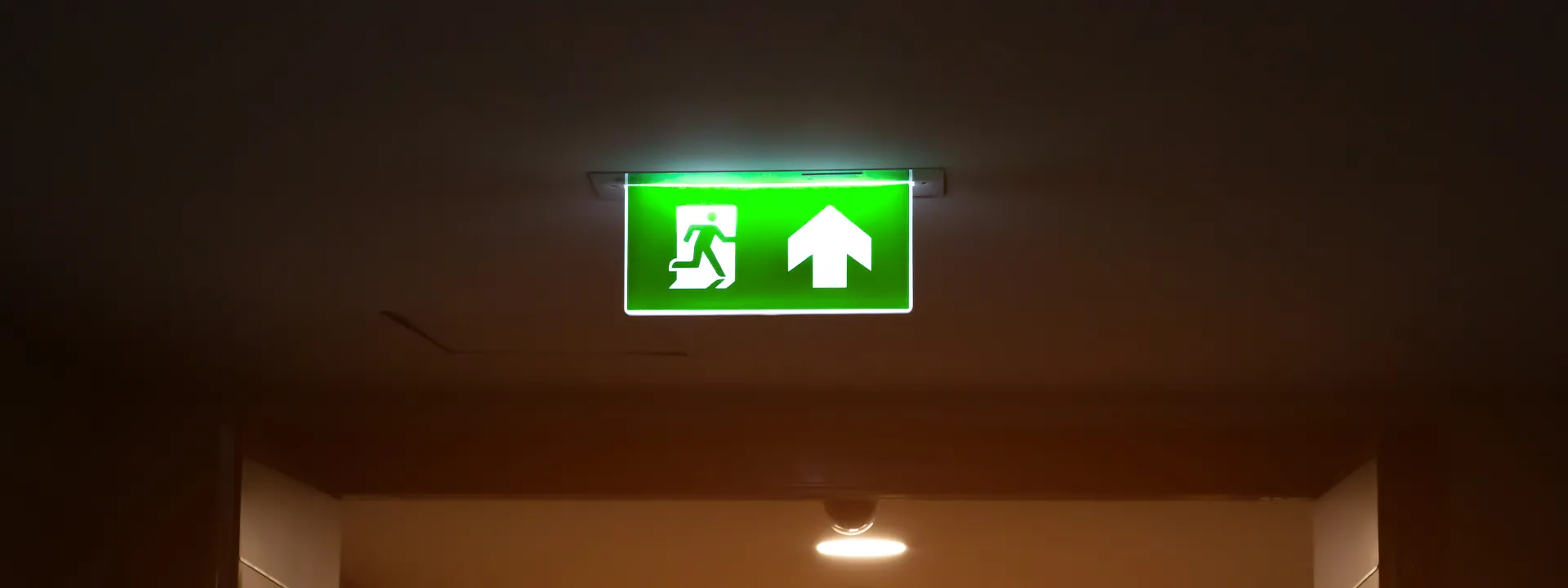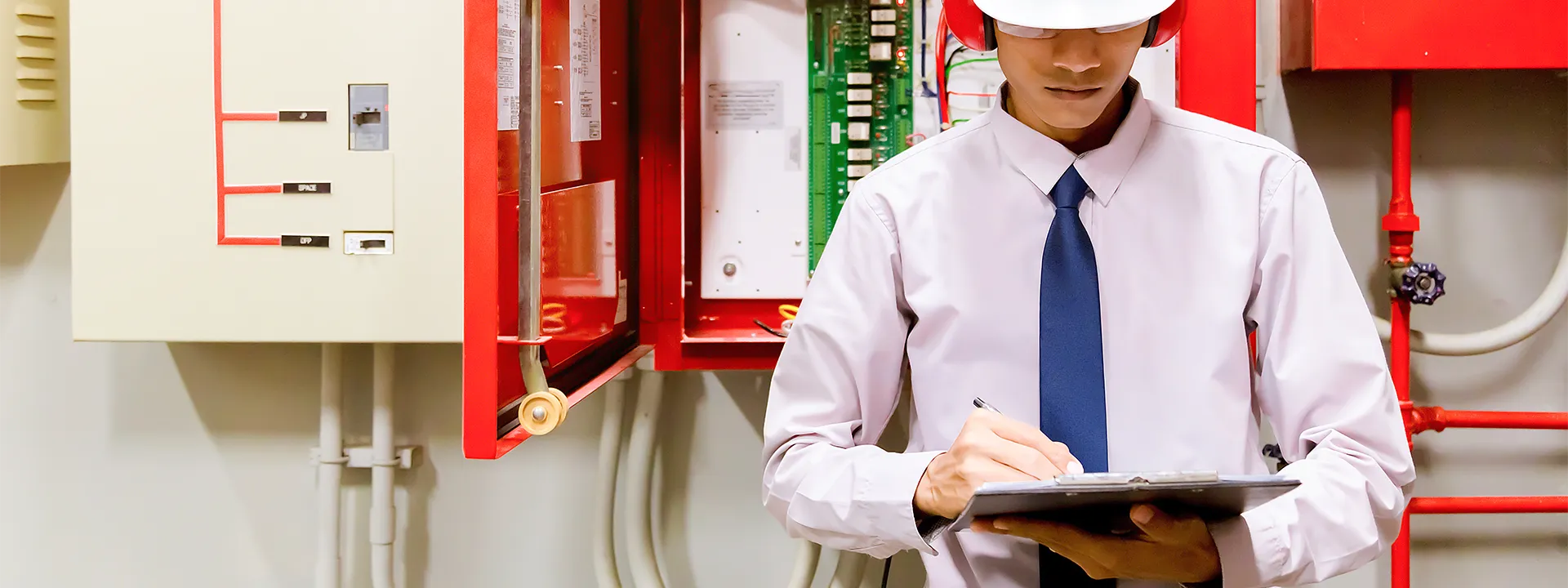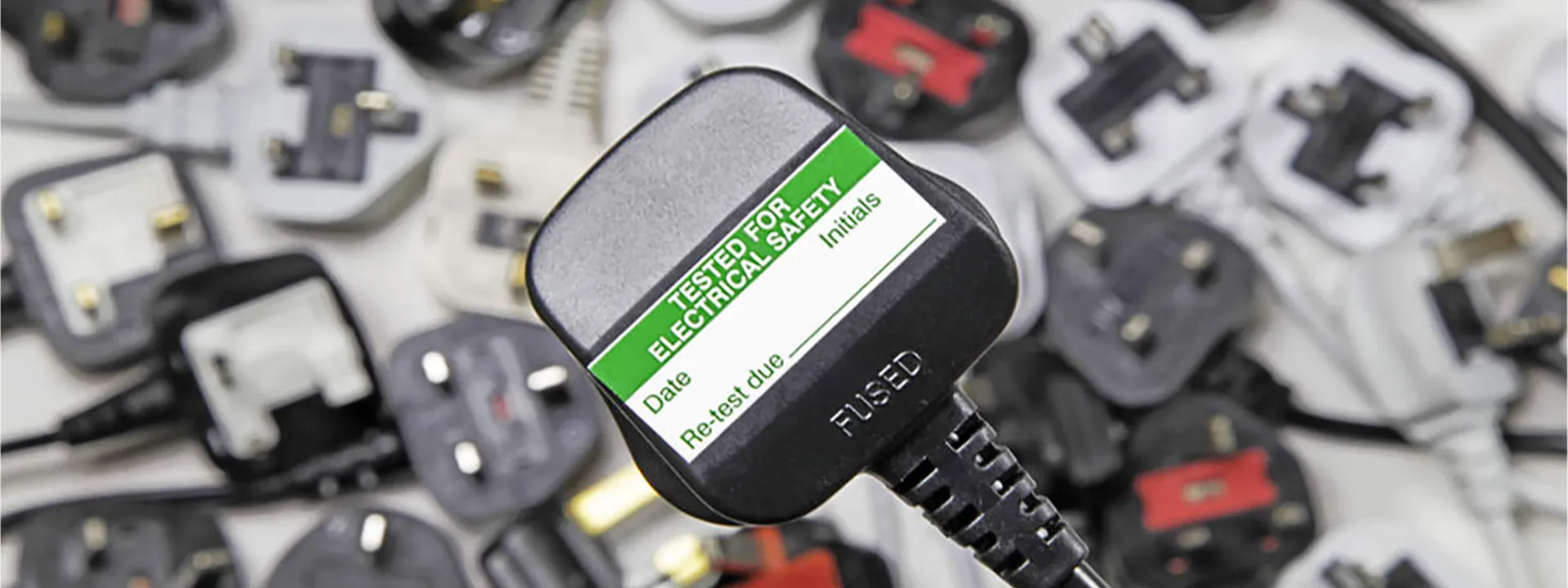Conducting a thorough fire risk assessment is vital for keeping yourself and the people in your building safe. But how often should you review fire risk assessment? That is the answer we will be looking for in this content. This question will also help you determine the signs of needing a fire risk assessment, the benefits and the mistakes people make.
What is a Fire Risk Assessment?
A fire risk assessment systematically evaluates potential fire hazards, the risks they pose, and measures in place to mitigate them. It forms the foundation of fire safety protocols.
Importance of Regular Review
Fire risks change over time because things like buildings, people, and rules can change. So, checking fire risk assessments regularly is crucial. It helps ensure they stay useful and can deal with the current dangers.
When companies and groups review these assessments now and then, they can find new risks and stop them before they cause a fire. This careful way of doing things reduces the chances of fires and makes places safer for everyone.
Also, rules say that places must do these safety checks regularly. Following these rules isn’t just about obeying the law; it shows a promise to keep everyone safe in the building.
In simple terms, checking fire safety is often about keeping safety plans updated, following the rules, and ensuring they fit the specific dangers in that place. It’s like a smart plan that keeps people safe, saves buildings, and ensures everyone knows how to stay safe.
Legal Compliance
Ensuring Adherence to Regulations
Ensuring fire safety plans follow the rules and laws is a big part of keeping everyone safe. These regulations aren’t just suggestions; they’re like a guidebook that tells businesses and organizations how to make their places safe from fires.
![]() Laws and Rules: There are specific laws and rules about fire safety that vary depending on where you are. Regularly reviewing fire risk assessments is a way of double-checking that everything aligns with these legal requirements.
Laws and Rules: There are specific laws and rules about fire safety that vary depending on where you are. Regularly reviewing fire risk assessments is a way of double-checking that everything aligns with these legal requirements.
- Avoiding Penalties: Following these regulations isn’t just about doing the right thing; it’s also about avoiding penalties. If a place doesn’t stick to the rules, it might face fines or other consequences. Regular reviews ensure everything stays on the right side of the law.
- Showing Responsibility: Adhering to regulations isn’t just a legal necessity; it’s a way of showing responsibility. It tells everyone that the place takes safety seriously and is committed to following the best practices outlined by the law.
Read about the HMO Fire Risk Assessment Checklist to know what you need to do for your HMO building.
Frequency Guidelines
Recommended Review Intervals
Deciding how often to review fire safety plans is a common choice. Some guidelines suggest how often these assessments should happen. It’s like a schedule that checks everything regularly to keep up with potential risks.
![]() Industry Standards: Different industries might have different guidelines. Some may need more frequent checks due to the nature of their work, while others follow a standard yearly review.
Industry Standards: Different industries might have different guidelines. Some may need more frequent checks due to the nature of their work, while others follow a standard yearly review.
![]() Changing Circumstances: The recommended intervals take into account that things can change. Whether it’s a new building structure, more people, or updated regulations, the frequency of reviews adapts to the circumstances.
Changing Circumstances: The recommended intervals take into account that things can change. Whether it’s a new building structure, more people, or updated regulations, the frequency of reviews adapts to the circumstances.
![]() Staying Proactive: Following these recommended intervals isn’t just about ticking a box; it’s about staying proactive. Regular reviews catch changes early, ensuring safety measures are always up-to-date and effective.
Staying Proactive: Following these recommended intervals isn’t just about ticking a box; it’s about staying proactive. Regular reviews catch changes early, ensuring safety measures are always up-to-date and effective.
Signs It’s Time for a Review
Knowing when to review your fire risk assessment is crucial for keeping safety measures up-to-date. Look out for these signs that indicate it’s time for a thorough check:
![]() Structural Changes: If there have been changes to the building, like renovations or expansions, it’s essential to reassess potential fire risks associated with these alterations.
Structural Changes: If there have been changes to the building, like renovations or expansions, it’s essential to reassess potential fire risks associated with these alterations.
![]() Incidents or Near-Misses: Any fire incidents or close calls should trigger a review. Even if the incident was minor, it’s a red flag that something might need improvement.
Incidents or Near-Misses: Any fire incidents or close calls should trigger a review. Even if the incident was minor, it’s a red flag that something might need improvement.
![]() Regulatory Updates: Keep an eye on changes in fire safety regulations. If there are updates, your assessment should be reviewed to ensure compliance with the latest standards.
Regulatory Updates: Keep an eye on changes in fire safety regulations. If there are updates, your assessment should be reviewed to ensure compliance with the latest standards.
![]() New Equipment or Processes: Introducing new machinery or processes can bring new risks. Review your assessment when there are changes in equipment or work procedures.
New Equipment or Processes: Introducing new machinery or processes can bring new risks. Review your assessment when there are changes in equipment or work procedures.
![]() Increase in Occupancy: If there’s been a significant increase in the number of people using the space, it could impact evacuation plans and fire safety measures.
Increase in Occupancy: If there’s been a significant increase in the number of people using the space, it could impact evacuation plans and fire safety measures.
![]() Feedback from Employees: Employees often notice safety concerns. If there’s feedback or reports of potential hazards, take them seriously and review your fire risk assessment.
Feedback from Employees: Employees often notice safety concerns. If there’s feedback or reports of potential hazards, take them seriously and review your fire risk assessment.
How to Conduct a Review: Step-by-Step Guide

At this point you have enough information about how often you should review fire risk assessment and why. So we will now help you with conducting a proper fire risk assessment all by yourself. Just follow the steps in our guide:
1. Identify Potential Hazards
![]() Walk through the entire space and identify any potential fire hazards.
Walk through the entire space and identify any potential fire hazards.![]() Consider ignition sources, combustible materials, and any environmental changes.
Consider ignition sources, combustible materials, and any environmental changes.
2. Assess the Impact
![]() Determine the potential impact of each identified hazard.
Determine the potential impact of each identified hazard.![]() Evaluate how a fire could start and spread and what harm it could cause to people and property.
Evaluate how a fire could start and spread and what harm it could cause to people and property.
3. Preventive Measures
![]() Implement or update preventive measures to reduce or eliminate identified risks.
Implement or update preventive measures to reduce or eliminate identified risks.![]() This may include installing fire extinguishers, improving signage, or updating emergency exit routes.
This may include installing fire extinguishers, improving signage, or updating emergency exit routes.
4. Engage Stakeholders
![]() Involve employees, emergency responders, and relevant authorities in the review process.
Involve employees, emergency responders, and relevant authorities in the review process.![]() Consider their input and experiences to ensure a comprehensive assessment.
Consider their input and experiences to ensure a comprehensive assessment.
5. Documentation Update
![]() Update all relevant documentation, including emergency plans and evacuation procedures.
Update all relevant documentation, including emergency plans and evacuation procedures.![]() Make sure that everyone can get to the most up-to-date safety details.
Make sure that everyone can get to the most up-to-date safety details.
6. Training and Drills
![]() Conduct training sessions for employees on updated safety protocols.
Conduct training sessions for employees on updated safety protocols.![]() Organize fire drills to familiarize occupants with evacuation procedures.
Organize fire drills to familiarize occupants with evacuation procedures.
7. Use Technology
![]() Leverage technology for data analysis, automation, and real-time monitoring.
Leverage technology for data analysis, automation, and real-time monitoring.![]() Consider fire alarm systems and other technological tools to enhance the efficiency of your assessment.
Consider fire alarm systems and other technological tools to enhance the efficiency of your assessment.![]() Following these steps ensures a systematic and comprehensive review, addressing potential risks, engaging stakeholders, and utilizing technology for a more effective fire risk assessment.Regular reviews based on these guidelines significantly maintain a safe and secure environment.
Following these steps ensures a systematic and comprehensive review, addressing potential risks, engaging stakeholders, and utilizing technology for a more effective fire risk assessment.Regular reviews based on these guidelines significantly maintain a safe and secure environment.
Read about the steps to follow for fire risk assessment for London building owners.
Benefits of Regular Reviews
Knowing the benefits of regular fire risk assessments will make you more likely to do these assessments more often. Here are five simple benefits of doing a fire risk assessment:
![]() Early Risk Identification: Reviewing fire risk assessments helps spot new dangers early. This means businesses can take steps to prevent problems before they become serious.
Early Risk Identification: Reviewing fire risk assessments helps spot new dangers early. This means businesses can take steps to prevent problems before they become serious.
![]() Improved Safety Measures: By keeping safety plans up-to-date, organizations can ensure they have the right equipment and procedures to deal with potential fire risks. This enhances overall safety for everyone.
Improved Safety Measures: By keeping safety plans up-to-date, organizations can ensure they have the right equipment and procedures to deal with potential fire risks. This enhances overall safety for everyone.
![]() Legal Compliance: Regular reviews ensure that a company follows the law, meets required safety standards, and avoids penalties. It’s not just about rules; it’s about creating a safe environment as mandated by regulations.
Legal Compliance: Regular reviews ensure that a company follows the law, meets required safety standards, and avoids penalties. It’s not just about rules; it’s about creating a safe environment as mandated by regulations.
![]() Cost Savings: Preventing fire incidents through regular reviews can save money in the long run. The cost of dealing with a fire and its aftermath is often much higher than the investment in regular assessments and preventive measures.
Cost Savings: Preventing fire incidents through regular reviews can save money in the long run. The cost of dealing with a fire and its aftermath is often much higher than the investment in regular assessments and preventive measures.
![]() Cultural Embrace of Safety: Regular reviews foster a safety-first culture within an organization. When everyone is aware of potential risks and how to handle them, it creates an environment where safety becomes a shared responsibility.
Cultural Embrace of Safety: Regular reviews foster a safety-first culture within an organization. When everyone is aware of potential risks and how to handle them, it creates an environment where safety becomes a shared responsibility.
Common Mistakes to Avoid
Even though you know how often you should review fire risk assessments, you might need help doing them. Here are three common mistakes people make when doing their fire risk assessment:
![]() Neglecting Changes: One common mistake is not updating assessments when building, staff, or process changes occur. Overlooking these updates can lead to outdated safety plans.
Neglecting Changes: One common mistake is not updating assessments when building, staff, or process changes occur. Overlooking these updates can lead to outdated safety plans.
![]() Underestimating Risks: Some organizations may downplay certain risks, thinking they are unlikely. Regular reviews help avoid underestimating potential dangers and ensure a realistic assessment of all risks.
Underestimating Risks: Some organizations may downplay certain risks, thinking they are unlikely. Regular reviews help avoid underestimating potential dangers and ensure a realistic assessment of all risks.
![]() Lack of Employee Involvement: Another mistake is not including employees in the review process. Employees often have valuable insights into day-to-day operations and potential risks, making their involvement crucial for a comprehensive assessment.
Lack of Employee Involvement: Another mistake is not including employees in the review process. Employees often have valuable insights into day-to-day operations and potential risks, making their involvement crucial for a comprehensive assessment.
Conclusion
Regularly reviewing fire risk assessments is not just a legal requirement but a commitment to the safety and well-being of occupants. Stay proactive, engage stakeholders, and leverage technology to ensure your assessments are robust and effective.

